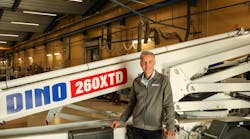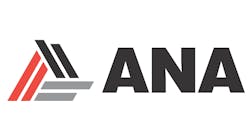It started out innocently enough, only attaining tropical storm status two days before reaching landfall over Rockford, Texas, as a Category 4 hurricane. But before it was done, Hurricane Harvey became the costliest natural disaster in United States history, causing, as of this writing, $198 billion in damage and claiming 90 lives. Many areas in eastern Texas received more than 40 inches of rain, flooding hundreds of thousands of homes, displacing more than 30,000 people and prompting more than 17,000 rescues. Hurricane Harvey was the strongest hurricane in the Gulf of Mexico since Rita in 2005.
Harvey was followed a week later by Hurricane Irma in the Atlantic, the most intense Atlantic hurricane since the legendary Hurricane Katrina in 2005 and the most intense to make landfall in Florida since Wilma in 2005. Irma claimed an estimated 134 lives at latest count. Shortly after came the devastating Category 5 Hurricane Maria which tore through the Caribbean and particularly devastated Dominica and Puerto Rico.
While first responders such as police, first-aid workers and fire departments have become more appreciated in recent years, few people, other than those directly involved, are aware of the significant role played by equipment rental companies and equipment manufacturers in response to such disasters. Within the industry, the task of providing generators and helping to restore power gets the most attention. However, pump manufacturers and rental companies play a vital role in helping to lessen the impact of disasters such as hurricanes, the recovery afterwards and developing long-term plans to mitigate the damage done by future storms.
Well before Hurricane Harvey hit land, pump manufacturers and rental companies were in action. The most important hurricane work is done in advance, getting equipment and materials out to rental companies and customers in need.
“Historically, previous storms have taught some lessons,” says Robert Cloud, regional sales manager Southern U.S. (Texas) for Xylem’s dewatering business. “One of the things we offer our customers is a contingency planning program, in the event [municipalities] lose power or in this case they suffer from massive flooding. We also work with our industrial and refinery-based customers. In the Gulf Coast there are a lot of refineries and industrial markets and any down time for any of these facilities is a huge money loss. We work with all of our customers to try to build a backup plan.”
Xylem, a manufacturer of Godwin and Flygt pumps with its own chain of rental locations, offers contingency planning deals to its customers, mostly in the industrial and municipal markets, to pay to reserve pumps from the beginning through the end of the hurricane season at a discount.
“We have customers that will come to us say in June every year and they will do what we call a hurricane rental package, and in that process they rent pumps from us for the entire hurricane season basically through November 1 at a reduced rate,” Cloud says. “We know exactly what they need whether it’s two 4-inch pumps, two 6-inch pumps, whatever their needs are plus any hose or accessories, just sitting there with their name on it. So if they choose to trigger that rental if there’s a storm that’s coming in and they want to put that rental pump onsite, then we put it on rent.”
As Cloud says, there is typically a lot of interest in such plans after a major flooding event, but as years go by without major storms, companies tend to lose interest until the possibility of a major hurricane looms. As hurricane season approaches, Xylem, like other pump manufacturers and rental companies, gathers as much equipment as possible – pumps along with hose, pipes and other accessories -- and stages the equipment as close as possible to where the storm is expected to hit.
United Rentals, which has multiple pump specialty locations, particularly in the southeastern U.S. where hurricanes are most common, prepares as storms come close.
“It was tough because the impacted areas were so broad, and it was a pretty dynamic situation,” says Paul McDonnell, senior vice president of sales & specialty operations, United Rentals, Stamford, Conn. “Typically, we’ll stage the equipment in advance. For example before the hurricane hit Florida, we staged equipment in Atlanta, and we waited for the hurricane to hit to identify where we needed to deploy resources, people and assets. In Texas it was a little bit more challenging because we didn’t anticipate the flooding to be as severe as it was. We had pumps in Beaumont, pumps in Houston, pumps in Lake Charles, La. And we deployed pumps from outside the impacted areas as well. But Houston and Atlanta were the two primary command centers where we put in place emergency contingency plans and then deployed into the impacted areas.
“The double impact of Harvey and Irma was unprecedented, but our specialty operations are prepared for events of this nature with disaster plans.”
United Rentals has the benefit of its size to be able to draw equipment from throughout its vast network to support operations in the hurricane zones. It has a large staff on its Pump and Power Specialty Group as well as others from general rental operations. Xylem as well, with 44 branches in the United States and Canada as well as a large distributor network, also uses its size to support its operations.
United Rentals also develops contingency plans with its customers.
“It’s really a three-step process,” McDonnell says. “First we deploy pumps in advance of the storm. We have national account agreements with a lot of refineries, so they’ll activate those contingency plans in power and supplemental power and pumps in advance of the storm. Second comes the restoration and recovery, the cleanup, which is what happens after the storm where we have strong working relationships with restoration and remediation contractors that will go in and actually work with the refineries and outside the refineries with cleanup. And the third phase is what comes next and that is rebuilding.”
“We always try to stress advance preparation, and we send out notices to our customers, and fliers, to try to remind them to get their equipment ready and know who to call when the emergency does come,” says Bobby Zitzka, national sales manager of Thompson Pump and Manufacturing, which manufacturers pumps as well as operates a chain of rental centers. “That being said, Harvey surprised us. We knew it was out there but it took a turn and became a massive storm quickly. So we started shifting assets to our Baton Rouge branch, and called our customers to see what we could do and even took pumps out of our sales stock to send to some of our rental houses and get everybody prepared.”
Thompson Pump has an Emergency Response Team, which includes 30 or more people as well as staff from local branches participating in the storm effort.
“We really start in June and we try to remind our customers, the rental houses and others who own pumps to make sure equipment is in working order, to be prepared that way,” says Zitzka. “We take a look and see what we need to put in stock that will be there in case of emergency. We have more than 2,000 pumps in our rental fleet and 20 rental branches. We organize and reach out to all the branches and identify what assets are available and get prepared, contacting customers in that area, and helping to get everything out in advance. A lot of times when a storm comes, it becomes difficult to get in the area so we try to make those things happen in advance. We provide manpower and engineering support onsite as well as the rental equipment, and hoses and accessories. And then our local branches react as well. And we reach out to all of our existing customers that have equipment on rent and we make sure everything is secure and ready for when the storm hits.”
Joe Moser, Atlas Copco product manager - pumps, says the key is communication. “The biggest key to success for us, both on the pump and the power side, was calling and getting good quality information to our rental partners and distributors in the regions, letting them know what we had available,” he says. “We’re based in Rock Hill, S.C., not that far from the affected zones in Texas and in Florida, so a lot of it was making sure that partners had good quality information about what we had on the ground, where it was located and how quickly they could get it.”
No matter how much rental companies and manufacturers prepared, with three such massive storms in succession, there were more requests than they could handle, which is all the more reason rental companies have emphasized contingency planning relationships with regular customers, thus ensuring priority.
“We staged our equipment in San Antonio, because that’s where we could get to,” says Cloud. “We could get people there; we could get trucks and pumps there and then we started assessing damages in Corpus Christi, Rockport, Houston, and Port Arthur areas, so those were our areas of first response. And initially it’s just that, it’s an emergency response, you’re getting as many pumps as you can out, as much hose and pipe as you can get out. The basic response is an emergency need to get dewatering pumps out. And to get to areas where there may be the threat of sanitary sewer spill or to a lift station that’s been flooded, to get these customers up and running so that they can have either potable service for their drinking water or sanitary service for wastewater. Those are serious problems. And so just meeting those needs is our initial first response.”
Cloud gives an example of how a contingency plan works.
“The city of Ingleside [Texas] was hard hit,” he says. “But they had a contingency plan that was put in place four or five years ago. We knew the number of lift stations that they had, we knew which pump went on which lift station and we knew how much hose they were going to need per station. And we mobilized seven pumps with hose and pipe. We kept them up and running and they never missed a beat. They contacted our sales rep and said ‘This is what we’re going to need when things are clear and you can actually get in.’ We already had our staging area in San Antonio and we took off. We got their water treatment and their wastewater system up and running and kept them going. So that’s a good success story and it points to the value of contingency planning and reflects our service and the way we respond to meet our customers’ needs.”
Critical infrastructure
Cloud says that while Xylem has a broad customer base with varying demands during severe weather events, critical infrastructure concerns are always his focus.
“The critical infrastructure under the care of municipalities, water treatment facilities, and wastewater treatment facilities that have become inoperable or are under water -- that’s where our focus is,” he says. “We don’t put any more emphasis on one customer over another, but at the point when we have to prioritize resources in an event like we just had, we want to take care of critical infrastructure. We do a lot of work for the city of Houston, so that’s where our focus is.”
United Rentals also was involved in critical infrastructure issues.
“Some of the hardest hit areas where we’ve been able to help with the recovery are the Houston metro and the petrochemical infrastructure in Texas and Louisiana,” says McDonnell. “Our customers raced to shut down multi-million-dollar operations ahead of the rising flood waters, and our pumps were able to mitigate how quickly the water rose. We’ve also provided equipment for dewatering large-scale mining operations, relieved overflowing municipal wastewater treatment plants, and helped recover submerged lift stations in multiple states.”
“A lot of the pump work is on the sewer infrastructure,” says Thompson Pump’s Zitzka. “The pumps and the electrical grid and even the generators get knocked out and that sewage needs to keep flowing. That’s a lot of what we’re doing during these storms.”
During the initial response stage, often just about anything that will remove water will work. Sometimes the customer is glad to get anything that’s available.
“In the early stages, we focus on rapid response, deploying readily available pumps to quickly remove water,” says Cloud. “When you get to the recovery stage or the sustain stage, that’s when it’s all about the application and identifying the best pump for the job.”
A wide variety of pumps were used in the hurricane response. “We had multiple calls from companies along the ship channel that needed pumps,” says Cloud. “We had temporary fire pump applications. In those refineries, their panels or their operating systems get wet and they lose power and so they have to have a temporary fire pump to back up their fire-suppression system. We were able to respond by using our high-head pumps. We had issues where our submersible hydro units were used, we had opportunities for our electric submersibles. We used all our dewatering pumps. So it’s multiple applications, multiple solutions we were able to provide. We had calls for pumps to pump out parking garages in downtown Houston, in the basement where it all filled with water. In office towers and apartment complexes, the parking is below ground and all of that was under water, so we had calls from engineering firms and large residential apartment buildings in need of pumps.”
“The immediate demand was for fleet ranging from 3-inch gas water pumps up to the big 30-inch diesel centrifugal pumps, which can move massive amounts of flood water,” says United Rentals’ McDonnell. “In a number of cases, our team designed safe solutions for situations that were critical but outside the norm. We brought support in from across our North American network, both fleet and pump experts.”
“We used a lot of diesel-driven portable centrifugal pumps,” says Zitzka. “Trash pumps so they can do solids and handle high flows and sometimes to move things long distance. A lot of six-inch pumps. With Harvey we did put out large pumps, quite a few 12-inch and 18-inch pumps. With some industrial plants we did preplanning to get them out there in advance, sometimes where they have levees we’ll set up pumps and try to just continually pump over the levee and try to keep up with it.”
“During the hurricanes, we sold in the neighborhood of about 75 dri-prime pumps, that would be 4-inch, 6-inch and 8-inch,” says Atlas Copco’s Moser.
On the home front
While response to disaster is part of the nature of the rental industry, some rental workers were also having to deal with personal issues, since many lived in the path of the storms.
For United Rentals, one of the challenges was housing because a lot of its employees were displaced as a result of the hurricane. “Obviously the first call of order is safety, and we are very focused on our employees’ safety, making sure we are not putting our employees in harm’s way,” says McDonnell. “We brought in temporary housing, trailers—office trailers and living trailers for employees who were displaced.”
“While all the work was going on, our employees were dealing with some of their own personal tragedies,” says Cloud. “We had a handful of employees who lost everything. Everybody in Houston knows somebody who was affected. We were trying to manage the business and respond to our customers as we could, but we also had people whose houses were under water and were moving out in boats. I was so impressed with our people’s work ethic. We had people who just left their home under two feet of water coming out to load a truck or do a job setup.”
After the flood
Long after the floodwaters have receded, the work of recovery continues and will for a long time in Texas, the Gulf Coast, Florida and especially Puerto Rico, where massive infrastructure rebuilding will be going on for a long time, not to mention other smaller islands in the Caribbean that were devastated by water and wind damage. Pumps will still be needed as will many kinds of rental equipment.
And for pump rental specialists and pump manufacturers, now begins a great opportunity to really help their customers in a long-lasting manner. Xylem’s Cloud notes that after the devastating Hurricane Ike in 2008, his company sold more than two dozen contingency plans as hurricane preparedness was foremost and top of mind for so many companies that suffered serious damage from that storm. But as that hurricane receded into distant memory and more pressing immediate needs surged to the forefront, that number dwindled to a handful. Rental companies should be able to inspire refineries, municipalities and just about every kind of business to not be caught flat-footed and endure last minute scrambling when the next hurricane season comes around.








